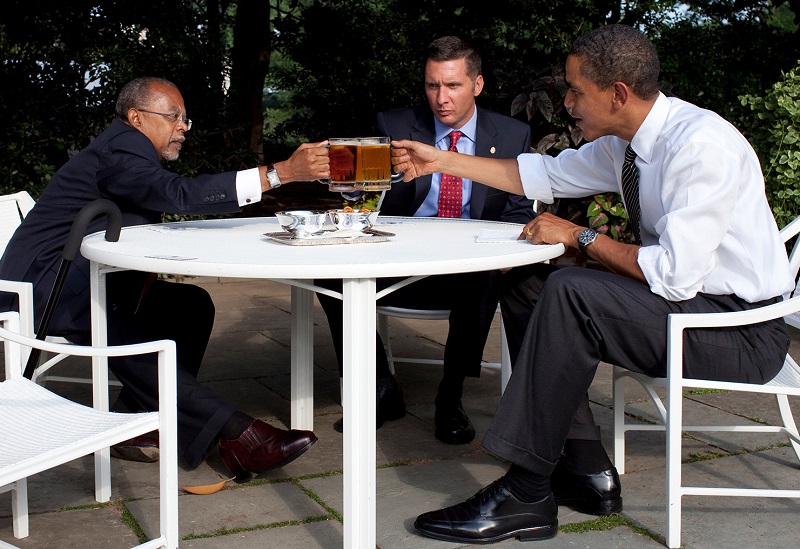

By Chief Joel F. Shults, Ed.D.
Local law enforcement hasn’t garnered much attention from the White House for most of America’s history. Things are very different now and not necessarily for the better.
The affairs of local policing were in the hands of elected sheriffs and marshals in the early days. Municipal police departments proliferated after the Civil War, with state agencies following in the first quarter of the 20th century with the advance of highways and an increasing population of the motoring public crossing jurisdictional lines in their newfangled horseless carriages.
Although federal law enforcement advanced in prominence after the Mann Act made kidnapping a federal crime and later the enforcement of Prohibition and the resulting gangster era of interstate crime, little thought was given to regulating crime and justice within individual states.
It took nearly a hundred years for state and local law enforcement to be held to federal Constitutional standards after the passage of the 14th amendment. It took a short time after the advent of televisions in most homes in America for the federal government to see local policing as an issue affecting national politics. Newsreel footage of police ignoring the protection of children attempting to attend newly integrated public schools and colleges, prompted a reluctant President Eisenhower to send federal troops and U.S. Marshals to Little Rock, Arkansas in 1957. President Kennedy dispatched U.S. Marshals to move Governor George Wallace from the doorway of the University of Alabama where he was blocking the entrance of the university’s first black student. News footage of officers dealing harshly with civil rights marchers in Selma, Alabama in 1965, and protestors in Chicago at the Democratic convention of 1968 all led to more intense national scrutiny.
Law and order became a theme with President Nixon shortly after the release of The Challenge of Crime in a Free Society in February of 1967. The report of President Johnsons Commission on Law Enforcement and Administration of Justice touted, to no one’s surprise, better education and training for local law enforcement. It was followed by The Omnibus Crime Control and Safe Streets Act that poured millions of dollars to state and local governments to better equip, train, and educate their police officers. Nixon’s war on drugs was another financial infusion of funding local law enforcement. While civil unrest still percolated from the civil rights struggle and opposition to the Vietnam War, Nixon strategically appealed to the “silent majority” whom he perceived to be tired of the disorder.
President Carter was a contrast to the Nixon era emphasis on law and order. His policies emphasized rehabilitation over punishment, the abolition of the death penalty, more emphasis on white collar crime instead of crimes committed by the poor, and the view that crime was a social disorder best addressed by a good economy and greater national unity and respect for the law. His successor, Roland Reagan, adopted a more Nixonian approach to criminal justice.
The rising concern about drugs and gangs among the voting public was recognized by Bill Clinton in his 1992 campaign for President. The issue was given little attention by rival George H.W. Bush, the incumbent at the time. Clinton’s proposals, most of which became law, involved increasing the number of police officers by 100,000 and emphasizing community oriented policing.
The Violent Crime Control and Law Enforcement Act of 1994 was another major federal effort to infuse money to address the problem of crime. The political importance was the effort by Clinton and Democratic legislators to remove the reputation that the party was soft on crime as a Carter era legacy. Current presidential hopeful Joe Biden was a major supporter of the legislation. While Clinton has publicly apologized for the law because it resulted in increases in prisons and prisoners (while still acknowledging that crime rates went down as a result), Biden has recently reiterated his support for community oriented policing with promises of more funding.
George W. Bush famously stood with first responders in the aftermath of the September 11th, 2001 terrorist attack. In reshuffling federal law enforcement, the importance of local policing in combatting terrorism was attached to funding and equipping state and local agencies. A new wave of respect for first responders lasted until the Obama White House.
It is no mere editorial commentary or partisan quibble to say that Obama set the cause of respect for law enforcement back decades. His support for the mythology of Michael Brown as a victim of racist police violence, despite the multiple investigations that wipe out any such claims in the interaction between Brown and Officer Wilson, was as disheartening as the premature reactions to the cases we see celebrated by police antagonists today. Famously calling out police for doing a routine burglary investigation that involved questioning the owner of the house, who happened to be a friend of Obama’s and Harvard professor, he described the Cambridge, Massachusetts officers as “acting stupidly”.
In an insult befitting Obama’s perception of law enforcement, the President invited, Cambridge police Sgt. James Crowley, to have a low brow beer and peanuts with the professor and, as a last-minute guest, Vice-President Joe Biden. In other statements, Obama had claimed that America needs strong policing, but his damning with faint praise was always louder.
We have a current President who has appeared unequivocally supportive of law enforcement and for that most police officers are grateful. Police officers as a profession are not monolithic in their politics, so the field includes those who fear that the vociferous objection to Trump’s presidency and his pugnacious persona makes his support of police an incentive for more anti-police sentiment and opposition. Biden is more moderate on police reform than he is given credit by his critics, but those who may be brought into policy making in a Biden White House may not be.